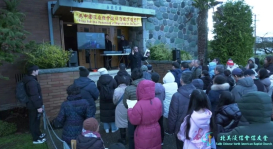In the third and final overview of the Pew Forum's 'Spirit and Power' study, Pentecostals were found to represent only 3.5 percent of Asia's population and charismatic members of non-Pentecostal denominations were at less than 1 percent of the nearly 4 billion people.
Christians are a minority in many Asian nations, representing no more than 10 percent of the population in most countries.
India has a population of 1.03 billion, according to the U.S. Department of State's 2006 International Religious Freedom report. The majority of the population is Hindu, constituting 80.5 percent. Muslims make up 13.4 percent and Christians, 2.3 percent.
Two major exceptions to the breakdown of religions in Asia are the Philippines and South Korea. The Philippines has a large Roman Catholic population and South Korea has a Protestant population of over 8.6 million out of the country’s 48 million people. Figures from the World Christian Database show a Christian representation of about 26 percent in South Korea, according to the 1995 census.
Christianity in general has grown significantly in Asia in the 20th century, outpacing Asia's rapid population growth, the Pew Forum reported. Christians are estimated to number 351 million, or 9 percent of the continent's population.
While charismatic influences remain minimal, especially in such major Protestant churches as the 2-million-member Church of South India, many of Korea's Protestant churches have adopted Pentecostal beliefs and worship styles. And Pentecostal and charismatic movements are reportedly gaining ground.
At least a third of Asia's Christian population is said to be charismatic or Pentecostal today and the proportion is steadily rising, cited the Pew Forum.
Although modest in comparison with Pentecostal growth in Africa or Latin America, Asia had a large influence on Pentecostalism’s beginnings.
Revivals in southern India in the 1860s and 1870s featured charismatic gifts and soon Pentecostal revivals spread throughout Asia, even before the Azusa Street Revival in Los Angeles. A major revival occurred in Pyongyang, Korea, in 1907 which in turn influenced revivals in China. Chilean Pentecostalism soon sprang up with roots in India.
Pentecostals and charismatics grew rapidly in the Philippines and South Korea, making up more than 15 percent of the population in both countries, the Pew Forum reported.
The largest church in the world – Yoido Full Gospel Church – is made up of Korean Pentecostals in Seoul. It claims a membership of more than 700,000. In the Philippines, the neopentecostal Jesus is Lord Church has a membership of 300,000. Challenging the dominant Catholic Church, as some say, Pentecostalism in the Philippines has seen its largest expression in the form of El Shaddai, a Catholic charismatic group with more than 7 million adherents.
Pentecostal megachurches are reported to be growing dramatically in India and Muslim-majority Indonesia. The Pentecostal Church of Indonesia had an estimated 2 million members in 2001.
At the lower end of the Pentecostal growth are Japan, Taiwan, Thailand, Uzbekistan and Vietnam along with other countries in Central Asia and the Middle East.
Pentecostals have increased involvement in politics and public life, including Yoido Full Gospel Church – one of the Korea's most vocal advocates of human rights and religious freedom for North Korea.
In most Asian countries, however, Pentecostal political activism has been less influential. At the same time, Pentecostal and other evangelical communities have been the focus of public controversy, with many accused of aggressive "proselytization" campaigns.
Some Asian countries, such as India and Sri Lanka, regard Pentecostal expansion as a threat to religion-based national identities, the Pew Forum reported, and the perception of Christians as "foreign" is pervasive.
The growth of Pentecostalism in Asia, thus, is likely to cause increasing public controversy.
The Pew Forum's historical overviews of Pentecostalism were previously done on Latin America and Africa.







